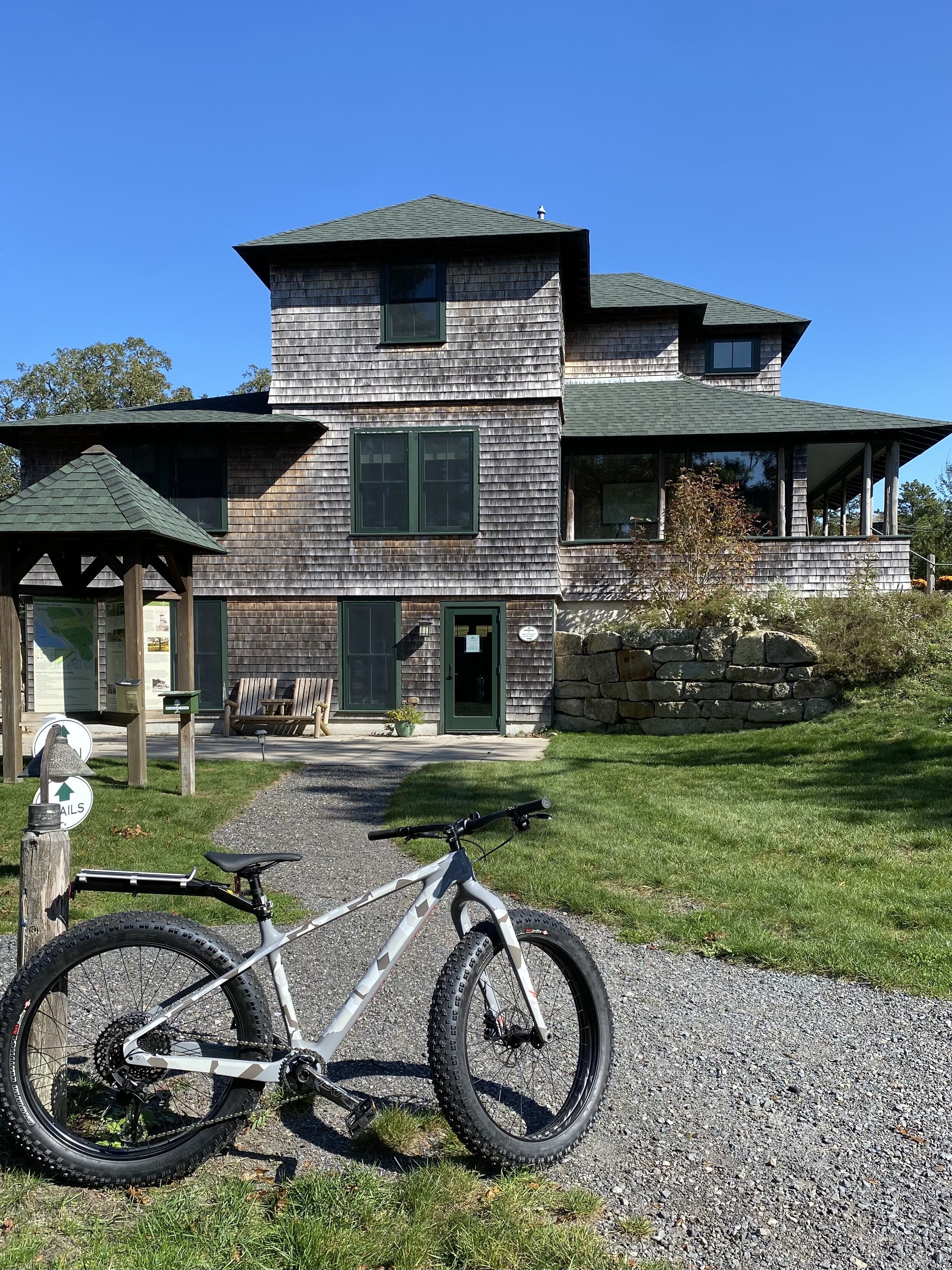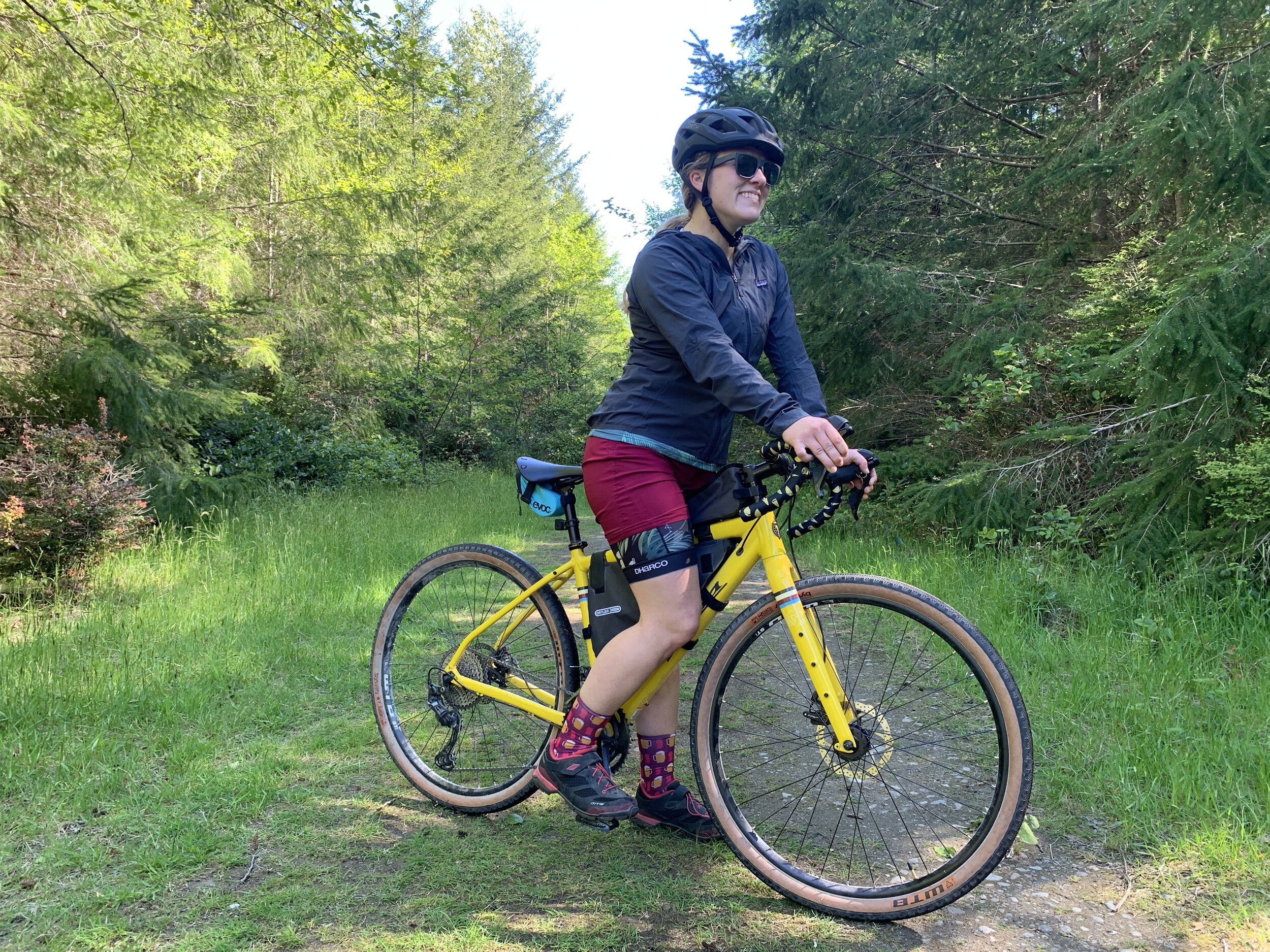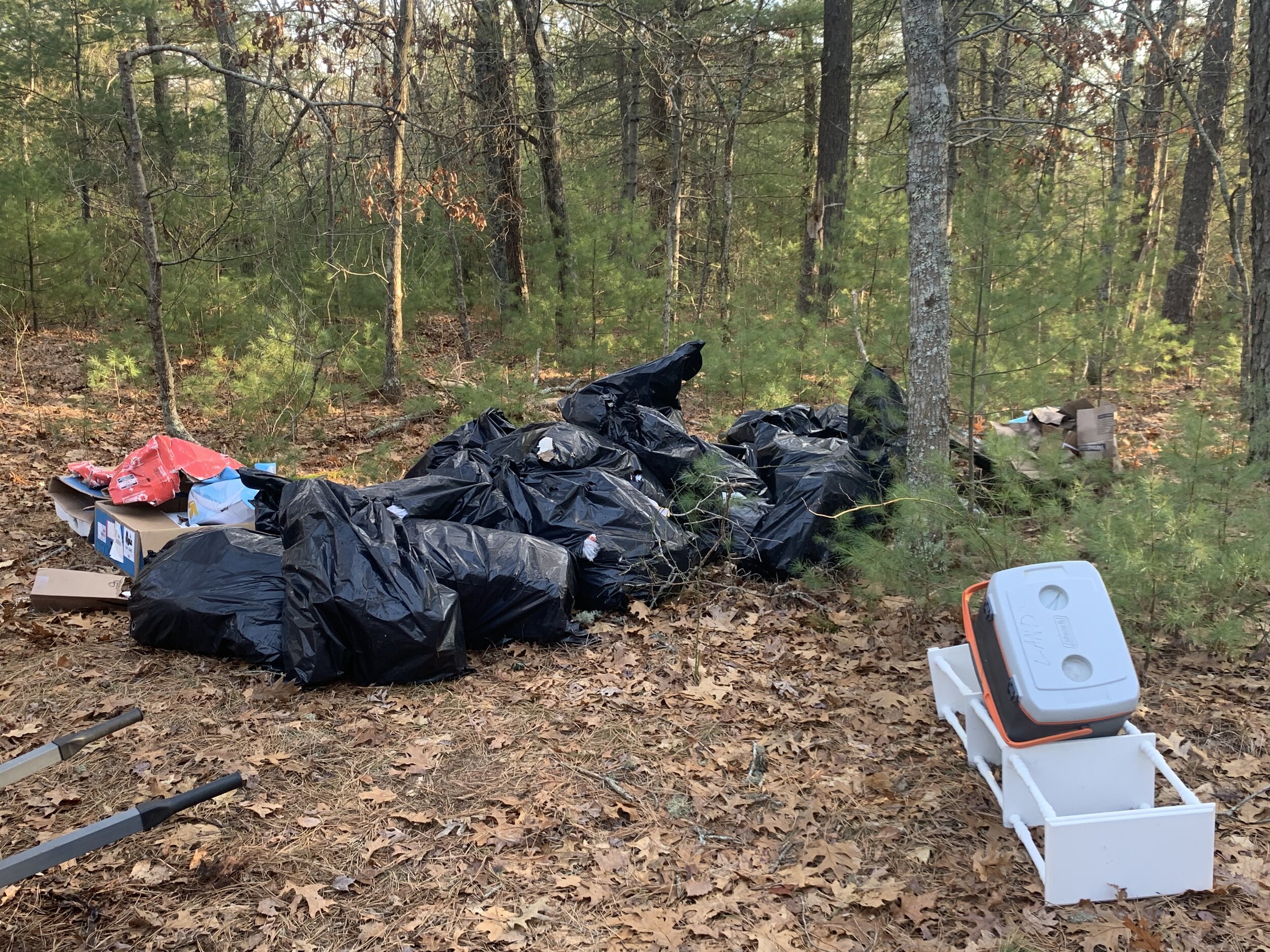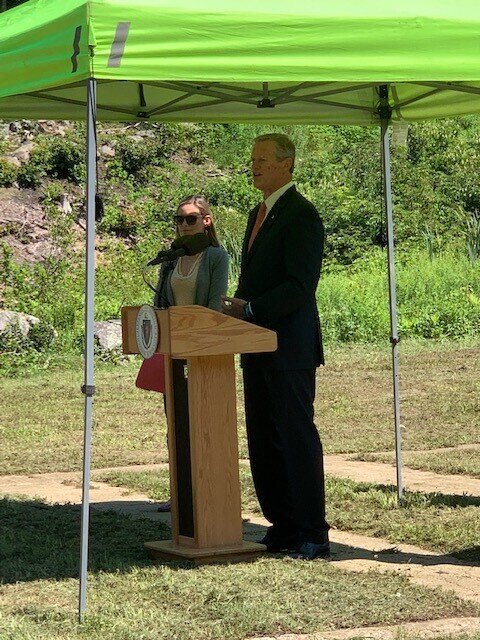As you scroll through upcoming Wildlands Trust programs, you may see a word used with increasing frequency – biking! And, no, that’s not a typo on “hiking.” As Wildlands enters a new chapter of programming, we are looking for ways to expand to different parts of our community. With some wonderful paved bike paths and fantastic access to singletrack (narrow mountain bike trails), the South Shore is steadily becoming a biking destination.
Our new Programs and Outreach Manager, Claire Johnston, is a passionate member of the biking community. “I’ve been an avid gravel and mountain bike rider for the last few years, primarily in the Pacific Northwest. I’ve also spent four years working in bike shops, and doing community engagement in the bike industry. I love leading group rides and holding clinics to teach at-home bike maintenance. I think, with the development we are seeing in the local biking community, there’s lots of room to bring events like this to Wildlands. I’m hoping to work with the South Shore chapter of New England Mountain Biking Association to plan some rides on Wildlands Trust preserves this fall and spring.”
When asked about the difficulty of rides that Wildlands will be offering, Claire said, “Just like our hikes, difficulty will vary and depend on a number of factors. The most important considerations for participation are: ride type, mileage, elevation, and difficulty.” Event descriptions will always include what type of ride is planned and what type of bike or equipment you will need for the event. Descriptions will also include the ride length and any elevation changes that impact the level of difficulty. Wildlands plans to offer a variety of rides as our biking program evolves to meet the interests of our members.
To get you started, the following category descriptions will help you determine which rides will be right for you:
Bike Paths: Riding on bike paths is safe, accessible, and generally pleasant on any type of bike. Paths are a great place to learn how to ride a bike! Difficulty of rides may vary based on length or elevation, but riders can be confident that bike path rides will be comfortable and fun for everyone, from beginners to advanced riders.
Road: Road riding, or riding on primarily paved surfaces, is focused on endurance and distance. Most road rides will link substantial lengths of bike lanes, and are most suitable for riders with high endurance and riding experience. Road rides require on-road safety equipment, like visibility clothing and bike lights.
Gravel: While gravel riding may sound like it’s exclusively on one type of surface, it really means any non-paved surfaces. Most local gravel riding is a mix of gravel, dirt, bark, and even some pavement. Gravel rides will vary in difficulty, but require comfort with riding on non-paved surfaces and tires that are wide enough to be steady (usually 30mm +).
Mountain: While this may not always involve going up a mountain, all mountain biking will involve lots of dirt and some technical riding. Typically, rides will involve both elevation change and some obstacles while descending. But don’t be afraid! Events will vary from beginner to advanced rides, and descriptions will clearly indicate the difficulty level. Mountain biking can be a wonderful way to explore nature on two wheels. Most riders prefer having wide tires for these rides (2 inches +).
Sometimes, as trails transition to multi-use areas, such as hiking and biking on the same paths, there can be changes to the physical structure of trails. This is something the Wildlands programming and stewardship teams are aware of, and are ready to take on. According to Claire, “I personally am a huge hiker and biker, so I understand the need to maintain trails to be safe, accessible, and ecologically responsible for both communities. The properties where we host mountain biking or gravel programs will have stewardship plans updated accordingly. We plan to get some of the mountain biking community involved in work parties and routine trail maintenance. We will also work to increase awareness among our user base about ‘good’ and ‘bad’ times to ride on trails, based on weather conditions. Additionally, every program held on Wildlands properties will start with a safety lecture that includes the golden rule - bikers must always yield to hikers and communicate their presence! Trails are best when they are safe, friendly, and shared.”
Feeling intrigued but unsure about hopping back on your bike? If you have an old bike you need to fix up before getting out to ride, fear not! Claire is happy to assist Wildlands’ members with evaluating a bike--even if it's been in the garage for 20 years! She can take a look and give you advice on whether it's safe to ride, and suggest next steps for maintenance. If you have any questions about our upcoming bike programs (or just want to meet a fellow shredder) feel free to reach out to Claire at cjohnston@wildlandstrust.org. We look forward to seeing you on the trail!













